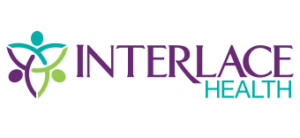The Digital Front Door and Risk Mitigation in Healthcare
Every healthcare organization has spent the past year trying to mitigate the risk of coronavirus exposure for both patients and staff. A large part of these efforts depended on a digital transformation in healthcare and the virtual care and telehealth solutions that resulted. Ideally, telehealth reduces the risk of exposure and increases access to care for people everywhere.
But “everywhere” doesn’t give the full picture. There are still significant barriers to virtual healthcare access in certain places and for certain groups of people. Low-income households, rural households, and households that include someone enrolled in Medicaid were all less likely to have the broadband access necessary for virtual care — as were Black and Hispanic patients with certain chronic illnesses.
This is all indicative of a real and persistent “digital divide” in the U.S. Knowing that characteristics like age, sex, ability, and socioeconomic status hold people back in many areas of life, it’s just as important to note that these traits also hold them back from receiving the virtual care that has taken the world by storm.
How do we move forward with an increasing reliance on telehealth as a way to keep patients and healthcare providers safe? With an end to the pandemic in sight, health systems will undoubtedly continue to use the technology to reduce the risk of exposure to myriad illnesses — not just to prevent the spread of coronavirus. That means increasing access to telehealth solutions by finding ways to open the digital front door in healthcare to more people.
How Digital Healthcare Can Help
Access to healthcare in rural areas and underserved communities is limited, making in-person care more of a necessity. For many services and specialties, fewer healthcare professionals are expected to serve more patients per capita — and fewer opportunities for virtual care exist because of the barriers to healthcare mentioned earlier. These communities also have less access to PPE and other supplies than some larger communities. This means physicians and patients alike are at a higher risk of infection because they’re inherently in a position that requires in-person care.
Opening the digital front door to these communities by implementing digital healthcare solutions helps mitigate this risk. At Interlace Health, we are proud to offer digital solutions that do just this:
· Electronic Informed Consent – Our Informed Consent solution helps health systems offer more contactless care, mitigating the risk of contact exposure. Several illnesses have been shown to spread by touching contaminated surfaces, especially in hospitals and physician’s offices. A survey we conducted in April of last year found that 41% of health systems use shared clipboards and pens in their registration areas; this means Informed Consent can push open the digital front door, positively impacting safety and reducing the risk for everyone involved.
· Remote Patient Intake – Our Patient Intake solution allows patients to register and fill out forms before appointments from the safety of their cars, homes, or workplaces. This helps them avoid unnecessary time spent in waiting rooms, limiting exposure for themselves and staff members. Instead of arriving 15 to 30 minutes before an appointment to complete the necessary paperwork, they fill it out from the comfort of home.
· eSignature Capabilities – Interlace Health digital solutions are equipped with eSignature capabilities. This not only helps clinicians provide and encourage contactless care but also expedites form completion and ensures that only the most updated versions of signed forms are stored. This saves staff time and eliminates the need to re-enter basic information more than once. The solution also strengthens compliance by accurately and securely storing patient information.
At Interlace Health, it’s our mission to help healthcare organizations everywhere open their digital front doors. To learn more about our solutions, click here.
ABOUT THE AUTHOR:
 Over the past five years, Lauren Ziegler has been a member of Interlace Health’s Marketing team, coordinating and executing marketing communication initiatives, such as copywriting and content management, public and media relations, social media, and corporate communications. She has over a decade of experience in working with technology companies. Lauren is passionate about helping the healthcare community understand Interlace’s Health’s value, vision, and commitment to improving experiences for providers, patients, and staff.
Over the past five years, Lauren Ziegler has been a member of Interlace Health’s Marketing team, coordinating and executing marketing communication initiatives, such as copywriting and content management, public and media relations, social media, and corporate communications. She has over a decade of experience in working with technology companies. Lauren is passionate about helping the healthcare community understand Interlace’s Health’s value, vision, and commitment to improving experiences for providers, patients, and staff.



